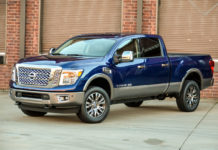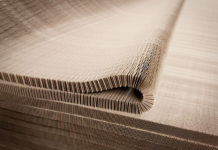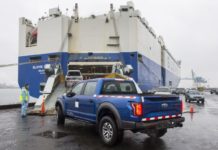Federal officials next month will finally unveil one of the last major auto safety regulations in the works — a requirement that automakers install side air bags by the early part of the next decade.
A government Web site said the National Highway Traffic Safety Administration regulation has been cleared by the Office of Management and Budget and was set to be released by Sept. 28. NHTSA chief Nicole Nason confirmed in a recent interview that new side-impact crash standards would be released next month.
Side-impact crashes are the second most common fatal type after frontal crashes, killing 9,200 people in 2005. The percentage of fatalities caused by side-impact crashes is on the rise — from 31 percent in 1980-81 to 49 percent in 2004-05.
That's at least partly because frontal air bags are required in today's vehicles (and have reduced frontal-crash fatalities), and side air bags are not, said Adrian Lund, president of the Insurance Institute for Highway Safety.
Also, Lund said, “growing sales of SUVs and pickups have exacerbated height mismatches among passenger vehicles, thereby increasing the risks to occupants of many vehicles struck in the side.”
The new rule, Lund said, is “going to force automakers to have side air bags cover more area.”
As part of the new side-impact crash regulation, automakers also are expected to make engineering changes to the side of a car or truck, including stronger roof rails, rocker panels and “B pillars” to absorb more crash energy.
In 2003, automakers voluntarily agreed to install side air bags in all vehicles by Sept. 1, 2009, and in 50 percent of vehicles by Sept. 1, 2007.
Automakers want the final rule to allow them to continue with that agreement, said Charles Territo, a spokesman for the Alliance of Automobile Manufacturers, a trade group representing the Detroit Three, Toyota and other automakers.
They also “want to ensure that sound science and the advances that have been made are considered,” whatever final side-impact crash test is used, Territo said.
“It's an important issue the industry took head on — or side-on.”
Automakers filed a number of objections in 2004 when NHTSA first proposed a side-impact crash standard. The industry asked that convertibles be exempted, and that NHTSA reduce the number of required crash tests.
The automakers also questioned NHTSA estimates of how much the regulation would cost them.
At the time, NHTSA said the new rule would cost automakers $208 per vehicle, or between $1.6 billion to $3.6 billion annually.
NHTSA twice met with the automakers' alliance in 2005 to discuss the concerns.
It is not clear if the final regulation will address any of those issues.
Congress first ordered NHTSA to look at side impact crashes in 1996. Nason's predecessor, Dr. Jeffrey Runge, has criticized NHTSA's long delay in issuing a final rule.
In an interview with The Detroit News in September 2006, Runge urged NHTSA to finalize side impact standards that could save 1,000 lives annually, and to complete a long-delayed rule to improve vehicle roof strength.








